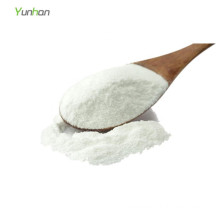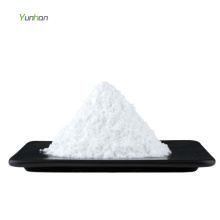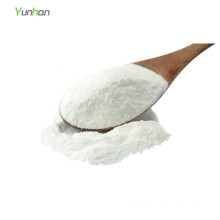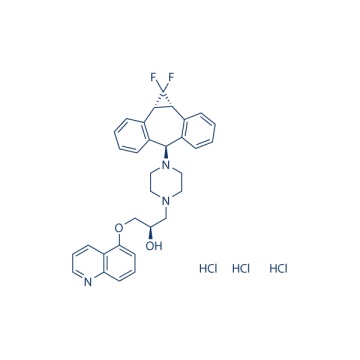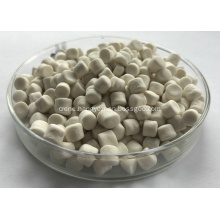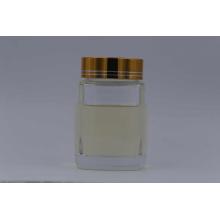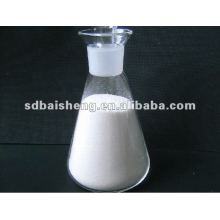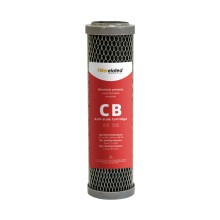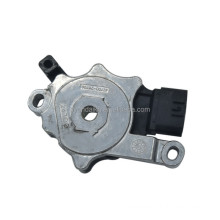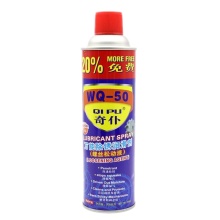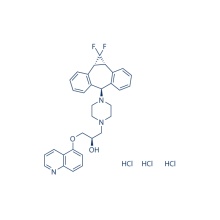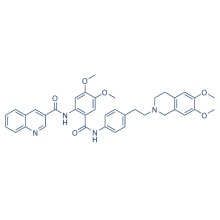Zosuquidar (LY335979) 3HCl 167465-36-3
Product Description
.cp_wz table {border-top: 1px solid #ccc;border-left:1px solid #ccc; } .cp_wz table td{border-right: 1px solid #ccc; border-bottom: 1px solid #ccc; padding: 5px 0px 0px 5px;} .cp_wz table th {border-right: 1px solid #ccc;border-bottom: 1px solid #ccc; padding: 5px 0px 0px 5px;}
Molecular Weight: 636.99 Zosuquidar (LY335979) is a potent modulator of P-glycoprotein-mediated multi-drug resistance with Ki of 60 nM. Phase 3.
LY335979 competitively inhibits equilibrium binding of [3H]vinblastine to Pgp by blocking [3H]azidopine photoaffinity labeling of the Pgp in CEM/VLB100 plasma membranes. LY335979 alone shows the cytotoxicity to drug-sensitive and MDR cell
lines with IC50 ranging from 6 μM-16 μM and produces its ability to
completely reverse the resistance of the oncolytics (vinblastine,
doxorubicin, or etoposide) to the MDR cell lines P388/ADR, MCF7/ADR,
2780AD, or UCLA-P3.003VLB at concentration of 0.1 and 0.5 μM.
LY335979 significantly restores drug sensitivity in P-gp-expressing
leukemia cell lines including K562/HHT40, K562/HHT90, K562/DOX and
HL60/DNR, and enhances the cytotoxicity of anthracyclines (daunorubicin,
idarubicin, mitoxantrone) and gemtuzumab ozogamicin (Mylotarg) in
primary AML blasts with active P-gp. A latest paper
indicates that LY335979 completely inhibits apically directed transport
of (Z)-endoxifen in the ABCB1-transduced cells.
Protocol(Only for Reference)Kinase Assay:
Cell Assay: [1]
Conversion of different model animals based on BSA (Value based on data from FDA Draft Guidelines)
For example, to modify the dose of resveratrol used for a mouse (22.4 mg/kg) to a dose based on the BSA for a rat, multiply 22.4 mg/kg by the Km factor for a mouse and then divide by the Km factor for a rat. This calculation results in a rat equivalent dose for resveratrol of 11.2 mg/kg.
Chemical Information
Molarity Calculator
Dilution Calculator
Molecular Weight Calculator
Contact us if you need more details on 167465-36-3 Zosuquidar 3HCl 167465-36-3. We are ready to answer your questions on packaging, logistics, certification or any other aspects about LY335979 3HCl 167465-36-3、167465-36-3. If these products fail to match your need, please contact us and we would like to provide relevant information.
Molecular Weight: 636.99 Zosuquidar (LY335979) is a potent modulator of P-glycoprotein-mediated multi-drug resistance with Ki of 60 nM. Phase 3.
LY335979 competitively inhibits equilibrium binding of [3H]vinblastine to Pgp by blocking [3H]azidopine photoaffinity labeling of the Pgp in CEM/VLB100 plasma membranes. LY335979 alone shows the cytotoxicity to drug-sensitive and MDR cell
lines with IC50 ranging from 6 μM-16 μM and produces its ability to
completely reverse the resistance of the oncolytics (vinblastine,
doxorubicin, or etoposide) to the MDR cell lines P388/ADR, MCF7/ADR,
2780AD, or UCLA-P3.003VLB at concentration of 0.1 and 0.5 μM.
LY335979 significantly restores drug sensitivity in P-gp-expressing
leukemia cell lines including K562/HHT40, K562/HHT90, K562/DOX and
HL60/DNR, and enhances the cytotoxicity of anthracyclines (daunorubicin,
idarubicin, mitoxantrone) and gemtuzumab ozogamicin (Mylotarg) in
primary AML blasts with active P-gp. A latest paper
indicates that LY335979 completely inhibits apically directed transport
of (Z)-endoxifen in the ABCB1-transduced cells.
Protocol(Only for Reference)Kinase Assay:
| ATPase Assay | P-Glycoprotein ATPase activity is measured by the liberation of inorganic phosphate from ATP. The assay is measured in a 96-well plate for 90 min at 37 °C. Membranes (8 μg-10 μg protein) are incubated in a total volume of 100 μL of buffer A containing 5 mM sodium azide, 1 mM ouabain, 1 mM EGTA, 3 mM ATP, an ATP regenerating system composed of 5 mM phosphoenolpyruvate, and 3.6 units/mL pyruvate kinase in the presence and absence of 1 mM sodium vanadate. Pgp-ATPase activity is defined as the vanadate-sensitive portion of the total ATPase activity. Plates are read 3 minutes after the addition of the detection solution. The absorbance is measured at 690 nm by a microtiter dish reader. A phosphate standard curve is used to calculate the μmol of phosphate formed. Samples are measured in triplicate. |
|---|
Cell Assay: [1]
| Cell lines | CEM/VLB100, P388/ADR, MCF7/ADR, 2780AD, and UCLA-P3.OO3VLB cells |
|---|---|
| Concentrations | 0.05 μM to 5 μM |
| Incubation Time | 72 hours |
| Method | Cell viability is determined using a modified 3-(4,5-dimethylthiazol-2-yl)-2,5-diphenyltetrazolium bromide dye reduction method. Cells are harvested during logarithmic growth phase, and seeded in 96-well plates. The cells are then cultured for 72 hours in the presence of oncolytics with or without modulators. MCF-7 and MCF-7/ADR cells are incubated 24 hours before the addition of the drug with and without the LY335979. LY335979 is prepared as 2 mM DMSO stocks and added to wells to give final concentrations ranging from 0.05 to 5 μM. After 72 hours, 20 μL of freshly prepared 3-(4,5-dimethylthiazol-2-yl)-2,5-diphenyltetrazolium bromide (5 mg/mL in Dulbecco's PBS) is added to each well and incubated for 4 hours in a 37 °C incubator containing 5% CO2. Cells are pelleted in a Sorvall RT6000B centrifuge, 70 μL of medium is carefully removed from each well, and 100 μL of 2-propanol/0.04 N HC1 is added. Cells are resuspended 5-10 times with a Multipipettor or until no particulate matter is visible. Plates are immediately read on a Titertek Multiskan MCC/340 microplate reader Flow Laboratories with a test wavelength of 570 nm and a reference wavelength of 630 nm. Controls are measured in quadruplicate and modulators are measured in duplicate. Cytotoxicity analyses are also performed using the CeliTiter 96 AQueous assay kit. |
Conversion of different model animals based on BSA (Value based on data from FDA Draft Guidelines)
| Species | Baboon | Dog | Monkey | Rabbit | Guinea pig | Rat | Hamster | Mouse |
| Weight (kg) | 12 | 10 | 3 | 1.8 | 0.4 | 0.15 | 0.08 | 0.02 |
| Body Surface Area (m2) | 0.6 | 0.5 | 0.24 | 0.15 | 0.05 | 0.025 | 0.02 | 0.007 |
| Km factor | 20 | 20 | 12 | 12 | 8 | 6 | 5 | 3 |
| Animal A (mg/kg) = Animal B (mg/kg) multiplied by | Animal B Km |
| Animal A Km |
For example, to modify the dose of resveratrol used for a mouse (22.4 mg/kg) to a dose based on the BSA for a rat, multiply 22.4 mg/kg by the Km factor for a mouse and then divide by the Km factor for a rat. This calculation results in a rat equivalent dose for resveratrol of 11.2 mg/kg.
| Rat dose (mg/kg) = mouse dose (22.4 mg/kg) × | mouse Km(3) | = 11.2 mg/kg |
| rat Km(6) |
Chemical Information
| Molecular Weight (MW) | 636.99 |
|---|---|
| Formula | C32H31F2N3O2.3HCl |
| CAS No. | 167465-36-3 |
| Storage | 3 years -20℃Powder |
|---|---|
| 6 months-80℃in solvent (DMSO, water, etc.) | |
| Synonyms | |
| Solubility (25°C) * | In vitro | DMSO | 100 mg/mL (156.98 mM) |
|---|---|---|---|
| Water | 23 mg/mL (36.1 mM) | ||
| Ethanol | <1 mg/mL ( | ||
| In vivo | 30% PEG400/0.5% Tween80/5% propylene glycol | 30 mg/mL | |
| | |||
| Chemical Name | 1-Piperazineethanol, 4-[(1aα,6α,10bα)-1,1-difluoro-1,1a,6,10b-tetrahydrodibenzo[a,e]cyclopropa[c]cyclohepten-6-yl]-α-[(5-quinolinyloxy)methyl]-,trihydrochloride |
|---|
Molarity Calculator
Dilution Calculator
Molecular Weight Calculator
Contact us if you need more details on 167465-36-3 Zosuquidar 3HCl 167465-36-3. We are ready to answer your questions on packaging, logistics, certification or any other aspects about LY335979 3HCl 167465-36-3、167465-36-3. If these products fail to match your need, please contact us and we would like to provide relevant information.
Product Categories : Neuronal Signaling > P-gp Inhibitor
Premium Related Products
Other Products
Hot Products
Astragaloside AChlortetracycline HCl 64-72-2Paclitaxel 33069-62-4Dexamethasone Acetate 1177-87-3Dinaciclib (SCH727965) 779353-01-4CHIR-124 405168-58-3Ro3280 1062243-51-9TAME 901-47-3CCG-1423 285986-88-110058-F4 403811-55-2Dabigatran (BIBR 953) 211914-51-1H 89 2HCl 130964-39-5T0901317 293754-55-9Aprepitant 170729-80-3Turofexorate Isopropyl (XL335) 629664-81-9BMS-378806 357263-13-9
